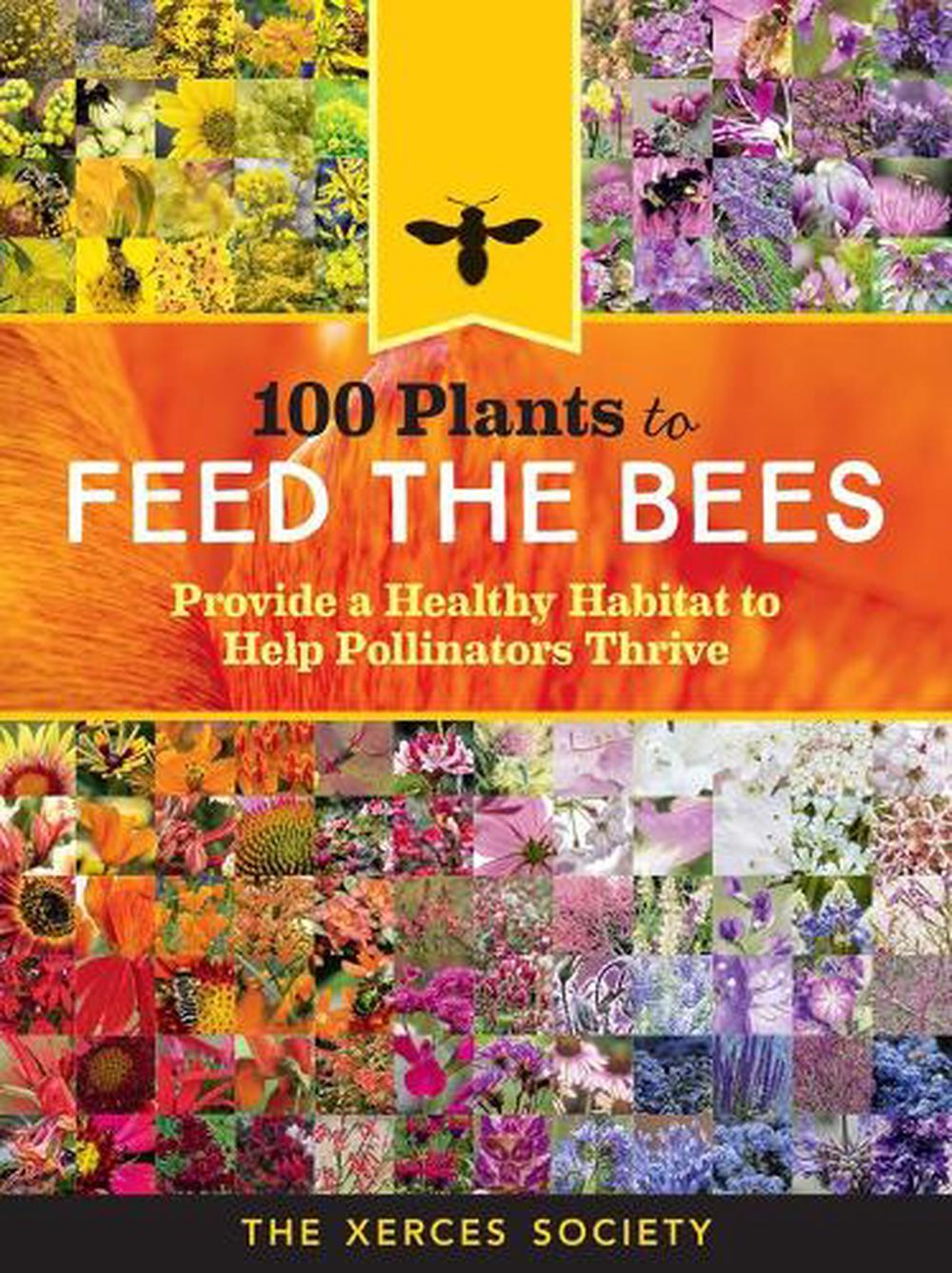
100 Plants to Feed the Bees
by The Xerces Society
In an at-a-glance, photo-driven format, 100 Plants to Feed the Bees presents 100 nectar- and pollen-rich plants that home gardeners can cultivate to create a more bee-friendly world.
Paperback
English
Brand New
Publisher Description
The international bee crisis is threatening our global food supply, but this user-friendly field guide shows what you can do to help protect our pollinators. The Xerces Society for Invertebrate Conservation offers browsable profiles of 100 common flowers, herbs, shrubs, and trees that support bees, butterflies, moths, and hummingbirds. The recommendations are simple: pick the right plants for pollinators, protect them from pesticides, and provide abundant blooms throughout the growing season by mixing perennials with herbs and annuals! 100 Plants to Feed the Bees will empower homeowners, landscapers, apartment dwellers anyone with a scrap of yard or a window box to protect our pollinators.
Back Cover
Plant for Pollinators The first simple step toward protecting our pollinators is to provide the flowers they need, using no pesticides. With abundant native wildflowers, your task is even simpler: don't mow them down! This field guide identifies the plants that honey bees and native bees - as well as butterflies, moths, and hummingbirds - find most nutritious, including flowers, trees, shrubs, herbs, and pasture plants. With guidance from the Xerces Society, the global authority on insects and other invertebrates, you can turn your backyard, farm, or commumity into a thriving pollinator habitat. Each plant profile includes which pollinators visit the plant, the quality of honey the nectar produces, when it blooms, how best to use it in the landscape, planting tips, and spectacular photography.
Flap
Plant for Pollinators The first simple step toward protecting our pollinators is to provide the flowers they need, using no pesticides. With abundant native wildflowers, your task is even simpler: don't mow them down! This field guide identifies the plants that honey bees and native bees - as well as butterflies, moths, and hummingbirds - find most nutritious, including flowers, trees, shrubs, herbs, and pasture plants. With guidance from the Xerces Society, the global authority on insects and other invertebrates, you can turn your backyard, farm, or commumity into a thriving pollinator habitat. Each plant profile includes which pollinators visit the plant, the quality of honey the nectar produces, when it blooms, how best to use it in the landscape, planting tips, and spectacular photography.
Author Biography
The Xerces Society is a nonprofit organization based in Portland, Oregon, that protects wildlife through the conservation of invertebrates and their habitat. Established in 1971, the Society is at the forefront of invertebrate protection worldwide, harnessing the knowledge of scientists and the enthusiasm of citizens to implement conservation programs. They are the authors of 100 Plants to Feed the Bees, Farming with Native Beneficial Insects, and Attracting Native Pollinators.
Table of Contents
Preface: What's Old Is New Plants and Pollinators: An Overview Pollinators and Pesticides Icon Key 1 Native Wildflowers Anise Hyssop, Giant Hyssop Aster Beebalm Black-Eyed Susan Blanketflower Blazing Star Blue Curls Blue Vervain California Poppy Clarkia Coreopsis Culver's Root Cup Plant, Compass Plant, Rosinweed Figwort Fireweed Globe Gilia Goldenrod Gumweed Ironweed Joe-Pye Weed, Boneset Lobelia Lupine Meadowfoam Milkweed Mountainmint Native Thistle Penstemon Phacelia Prairie Clover Purple Coneflower Rattlesnake Master, Eryngo Rocky Mountain Bee Plant Salvia Selfheal Sneezeweed Spiderwort Sunflower Waterleaf Wild Buckwheat Wild Geranium Wild Indigo Wingstem Wood Mint 2 Native Trees and Shrubs Acacia Basswood Blackberry, Raspberry Black Locust Blueberry Buckwheat Tree Buttonbush Chamise Coyotebrush False Indigo, Leadplant Golden Currant Inkberry Madrone Magnolia Manzanita Mesquite Ocean Spray Oregon Grape Rabbitbrush Redbud Rhododendron Rose Saw Palmetto Serviceberry Sourwood Steeplebush, Meadowsweet Toyon Tulip Tree Tupelo Wild Lilac Willow Yerba Santa 3 Introduced Trees and Shrubs Orange Plum, Cherry, Almond, Peach 4 Introduced Herbs and Ornamentals Basil Borage Catnip Coriander Cosmos Hyssop Lavender Mint Oregano Rosemary Russian Sage Thyme 5 Native and Nonnative Bee Pasture Plants Alfalfa Buckwheat Clover Cowpea Mustard Partridge Pea Radish Sainfoin Scarlet Runner Bean Sweetclover Vetch Average Number of Flower and Herb Seeds per Pound
Review
2017 GWA Media Awards Silver Medal winner "A wonderful and much-needed book that will inspire and inform the creation of bee-friendly wildflower gardens. Perhaps we can turn our gardens, neighborhoods, towns, and cities into vast, colorful havens for bees, butterflies, and other vital insects!"
-- Dave Goulson, biologist, founder of the Bumblebee Conservation Trust, and author of A Sting in the Tale "If you're ready to help save the bees, this is a great place to start. No matter where you live, this well-organized companion shows you the best plants to use."
-- Joe Lamp'l, creator, executive producer, and host of Growing a Greener World(R) "The ever-helpful Xerces Society shows us how to bring back our threatened species, one gorgeous garden at a time. Everybody wins!"
-- Dar Williams, singer, songwriter, and environmental activist
Promotional
Bees along with other pollinators, are essential to food production and ultimately human life, and their survival is in critical position. One of the simplest ways we can help ensure their future is by providing and protecting the plants they thrive on. In an at a glance, photo driven format, 100 Plants to Save the Bees presents 100 nectar and pollen rich plants that home gardeners can cultivate to create a more bee friendly world and turn their back gardens, fields, and vacant lots into pollinator paradises.
Review Quote
"A wonderful and much-needed book that will inspire and inform the creation of bee-friendly wildflower gardens. Perhaps we can turn our gardens, neighborhoods, towns, and cities into vast, colorful havens for bees, butterflies, and other vital insects!" -- Dave Goulson, biologist, founder of the Bumblebee Conservation Trust, and author of A Sting in the Tale "If you're ready to help save the bees, this is a great place to start. No matter where you live, this well-organized companion shows you the best plants to use." -- Joe Lamp'l, creator, executive producer, and host of Growing a Greener World
Details

